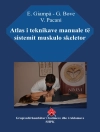The long-awaited Pocket Guide to Psychiatric Practice is a portable and concise companion to its parent textbook, Introductory Textbook of Psychiatry, Sixth Edition, the preeminent introduction to psychiatry for residents, medical students, and other health professionals. The Pocket Guide is designed to be carried with them on clinical rotations and contains the information needed for patient assessment and clinical management in an easily accessible and convenient format. Mirroring the larger text, the guide takes as its premise that physicians — regardless of their ultimate role in medicine — should be able to define and recognize mental illnesses, to identify methods for treating them, and, for those few who become researchers, to help develop methods for discovering their causes and implementing preventive measures. This pocket version, compatible with DSM-5, includes criteria sets for the most common disorders that learners encounter and is organized to follow the developmental lifespan. The author, who co-edited the larger text, has retained many of the attributes that made the parent text successful, while adding new, user-friendly features: Completely up-to-date information on all of the disorders and descriptions of newly released medications. A writing style that is interesting, consistent, and highly accessible, with no redundancy. A wealth of tables, lists, and other strategies for presenting information in a concise and easy-to-understand manner. Content organized in parallel with the Introductory Textbook of Psychiatry to make it easier to locate additional learning resources–such as case vignettes, useful clinical ‘pearls, ‘ self-assessment questions, and a glossary of terms–as needed. An emphasis on the satisfaction of working with psychiatric patients of all types and in all settings that will be appreciated by learners beginning their journey in the field.
Pocket Guide to Psychiatric Practice is a highly readable, interesting, and useful resource. Although the book is written primarily for medical students and residents in their first years of training, it will prove useful for individuals seeking psychiatric training from the perspectives of other disciplines such as nursing or social work. The Pocket Guide can be combined with the larger and more detailed Introductory Textbook of Psychiatry and the student-oriented Study Guide to Introductory Psychiatry, to constitute a library of resources on psychiatric disorders and their assessment that sets the stage for lifelong learning.
Daftar Isi
About the Author Preface Part I: Diagnosis and Psychiatric Interview Chapter 1. Diagnosis and Classification Chapter 2. Interviewing and Assessment Part II: Psychiatric Disorders Chapter 3. Neurodevelopmental (Child) Disorders Chapter 4. Schizophrenia Spectrum and Other Psychotic Disorders Chapter 5. Mood Disorders Chapter 6. Anxiety Disorders Chapter 7. Obsessive-Compulsive and Related Disorders Chapter 8. Trauma- and Stressor-Related Disorders Chapter 9. Dissociative Disorders Chapter 10. Somatic Symptom Disorders Chapter 11. Feeding and Eating Disorders Chapter 12. Sleep-Wake Disorders Chapter 13. Sexual Dysfunction, Gender Dysphoria, and Paraphilias Chapter 14. Disruptive, Impulse-Control, and Conduct Disorders Chapter 15. Substance-Related and Addictive Disorders Chapter 16. Neurocognitive Disorders Chapter 17. Personality Disorders Part III: Special Topics Chapter 18. Psychiatric Emergencies Chapter 19. Legal Issues Chapter 20. Psychotherapy Chapter 21. Somatic Treatments Index
Tentang Penulis
Donald W. Black, M.D., is Professor of Psychiatry and Director of Residency Training and Vice Chair for Education in the Department of Psychiatry at the University of Iowa Roy J. and Lucille A. Carver College of Medicine in Iowa City, Iowa�.












